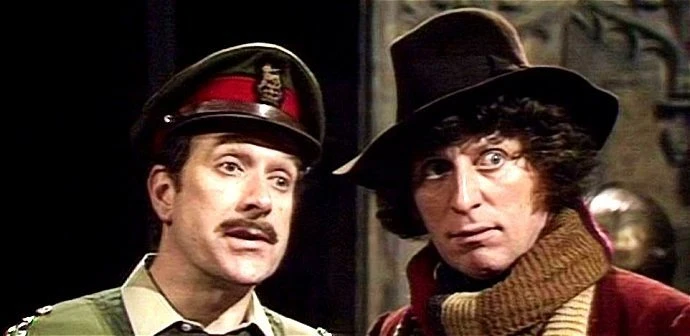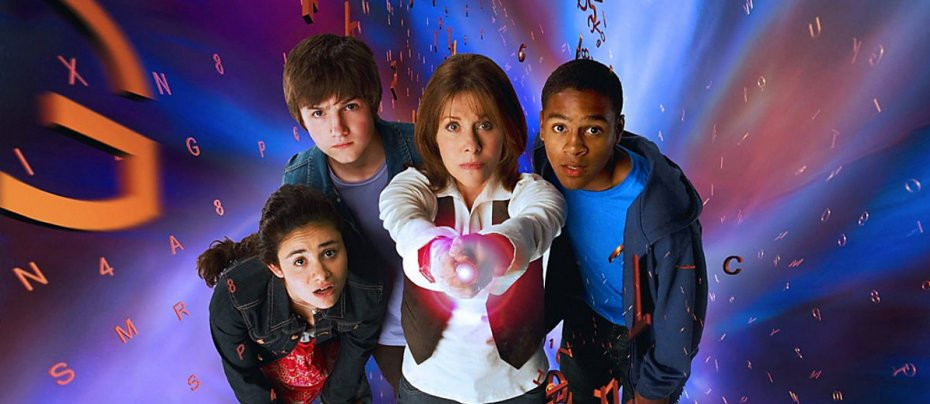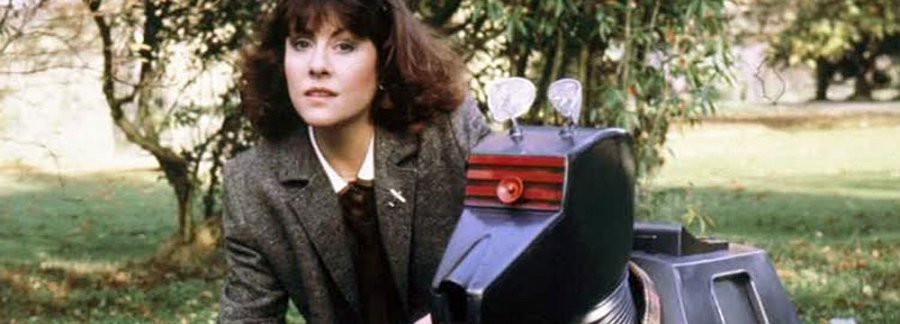Terror of the Zygons

Doctor Who's thirteenth season began only a few short months after its twelfth concluded, thanks to a canny move by the production team to have the series shown in the autumn and winter. Not only is this the half of the year that generally attracts higher viewing figures, due to nothing more than the fact that people are less likely to go out when it's dark and rainy outside, it is the time of year that best suits Doctor Who. Even now, there has been a concerted effort to avoid broadcasting the series in the summer months. Doctor Who is just better when the sun is going down.
The thirteenth season continued the motion of the series towards a darker, spookier version of Doctor Who. The first serial, Terror of the Zygons, is a slight oddity, in that it was recorded as part of season twelve but kept over in order to ease the production schedule and allow for the unusually short gap between seasons. (Unusually short for the latter part of the series, that is; in the Sixties it was virtually always on.) As such, it is very much a part of the same process as the preceding few stories. It's a process of breaking away from the past and forging ahead to a darker future. Tom Baker's first serial had seen him as the new element in his predecessor's set-up, with UNIT, Sarah-Jane, the Brigadier and his faithful car Bessie all present. The only other new elements in Robot were the one-off threat and new companion Harry Sullivan, played by the late Ian Marter. With the new Doctor and his team in place, the writers took him off to worlds new, but found time to comprehensively rewrite the Daleks and kill off the Cybermen (that they'd be back in seven years or so is by the by). Terror of the Zygons is the last step in this process; one more traditional UNIT story before the Doctor ditches his old team altogether. In practice, UNIT did make a couple of limited further appearances in the Tom Baker era, but the effective last stand of Pertwee's old team was here.
Terror of the Zygons is a beloved story in Doctor Who fandom, and it's not hard to see why. While it's cocking a snook to the cosy invasions of the Pertwee years, it's also proving that the production team can still do them very well. A number of them had worked on previous seasons. Script editor Robert Holmes, responsible for the overall vision of the first run of Baker stories, had cut his TARDIS teeth on scripts for Troughton, before turning in some of the finest Pertwee scripts. Douglas Camfield had been directing episodes for the series for over twelve years. These guys knew what worked and were in a perfect position to take those elements and put their own stamp on them. Here, we get the best of both worlds, a perfectly functioning UNIT story in traditional mould, which at the same time gently mocks the conventions of that format and introduces elements of the more gothic direction the series was soon to follow.

Tom Baker is on top form. By this stage, he had his version of the Doctor nailed and strolls around the forests and mansions of this story with great confidence. He's far more alien than his predecessor ever managed, displaying an aloofness and disdain for the entire debacle. The Doctor mocks the Brigadier for calling him back to attend nothing more than the wrecking of some oil rigs, dismissing the human race's dependence on "a mineral slime." It's only when the Brigadier points out that lives are being lost that the Doctor, shamefaced, agrees to help, before breaking out in that mad grin of his. The new Doctor turns up in his predecessor's stomping ground, just to prove that he can do this stuff just as well, thank you very much.
Baker's period on the series mostly stuck to the best recognised format for Doctor Who, that of the Doctor travelling with a solitary female companion (plus or minus a robot dog). Terror of the Zygons was the last serial to place the Doctor in a larger group of protagonists for quite some time. Sarah Jane Smith, the beloved companion played by Elisabeth Sladen, was this Doctor's stalwart companion, but we should not forget Ian Marter's Harry Sullivan. The naval doctor, seconded to UNIT, was originally written into the series in order to do the physical stuff for a Doctor anticipated as being played by an older man. In this set-up, Harry is not unlike Ian Chesterton in the very earliest Hartnell serials, or young Jamie Macrimmon, who accompanied Troughton's Doctor throughout almost his entire run. In practice, however, the Doctor was played by a man only just entering his forties, who was more capable of action scenes than any of his predecessors. Understandably, Harry was deemed surplus to requirements, and written out. However, Harry's relationship to the Doctor and Sarah has more in common with the triangular relationship between Amy Pond, Rory Williams and the Doctor in the Matt Smith years. It's easy to imagine that Steven Moffat took some inspiration from this earlier team. Harry is the well-meaning yet bumbling ordinary man thrown into the world of the Doctor and his faithful companion, who nonetheless shows he has what it takes to face down aliens and save the day. Nonetheless, Terror of the Zygons was the character's final appearance in Doctor Who, save for a single guest appearance later in the season.

Writer Roberts Banks Stewart, a proud Scot, seems to be having a lot of fun with this story. With the mystery of the Loch Ness Monster as his starting point, he develops a story that cheekily pokes fun at Scotland and the many televisual clichés associated with it. Brigadier Lethbridge-Stewart, like the writer, a member of the Clan Stewart, attends in a kilt, and even the Doctor sports a little tartan. The first episode opens with terribly clichéd roaring Scot demanding a better standard of meal - "Ha' ye no' got some haggis?" - but it's all in fun. This is televisual shorthand: we're in Scotland, come see the sights. Shughie McFee off Crossroads is playing the bagpipes, and something's been stirring in the Loch. Never mind that anyone from Sussex can recognise that this was filmed in sight of the South Downs. The whole serial drips Scottishness.
It was inevitable that Doctor Who would attempt to explain the legend of the Loch Ness Monster at some point (in fact, they explained it twice, but nobody likes the 1985 serial Timelash). The explanation - that the monster is, in fact, an alien cyborg - is just the sort of nonsense that the series is famous for. It's details that set it apart, though. The beast was augmented and brought to Earth by the alien Zygons, who require it primarily as a food source. We never see the warty alien suckling on their monster's teats, but it's a picture that nonetheless cannot be forgotten once imagined. Yes, Nessie is, in fact, the Skarasen, a gigantic biomechanical aquatic cow, whose destruction of oil rigs is merely a handy second function. Only in Doctor Who...

The Zygons themselves are rightly celebrated as one of Doctor Who's great monster creations. Until they reappeared in the fiftieth anniversary special in 2013, they were probably the single finest one-off alien species. Their forms, barely humanoid, set in lurid orange-red and covered in pustules and suckers, is truly unforgettable. It's a fantastic work of design, their vaguely foetal shape only adding to the disquiet. In terms of writing, they are rather straightforward villains. They seek to conquer the Earth in order to replace their devastated home world. "Isn't it a little large for just the four of you?" quips the Doctor, pointing out to the viewer just how silly the whole exercise is. That's the whole point; the Zygons are written as generic aliens for him to run rings around. They aren't the point of the story.

Yet they threaten to steal the show. Partly this is down to their astonishing design, but a great deal of credit has to go to the actors under the latex. The Zygons are shapeshifters, copying human beings and taking their place. This leads to the genuinely disturbing sight of Harry stalking Sarah Jane with a pitchfork, threatening her before falling and revealing his true form as a flailing, honking alien. More terrifying still is Lillias Walker as Sister Lamont, who is far more frightening in her human guise than as a Zygon. It is, however, John Woodnutt who truly makes the Zygons what they are. Playing both the Zygon leader Broton, and the Duke of Forgill, he is note perfect. While at first glance his alien warlord is a broad caricature, he's actually doing something very subtle. While his protrayal of Broton is very different to his portrayal of the Duke, they are both different again to his portrayal of Broton disguised as the Duke. Broton displays a sinister glee during his time in disguise, really getting into character but nevertheless distinctive from the "real" Duke. It's an intelligent performance, and it's what makes Broton such a successful villain. He clearly enjoys dressing up as a human.
Watching this serial is a bittersweet experience now, with so many of its stars now lost. Nicholas Courtney and Elisabeth Sladen passed only a few years ago, and Ian Marter died very young. John Woodnutt was lost several years ago. For this classic serial, though, as well as so much else, they will be remembered.
Review by Daniel Tessier









